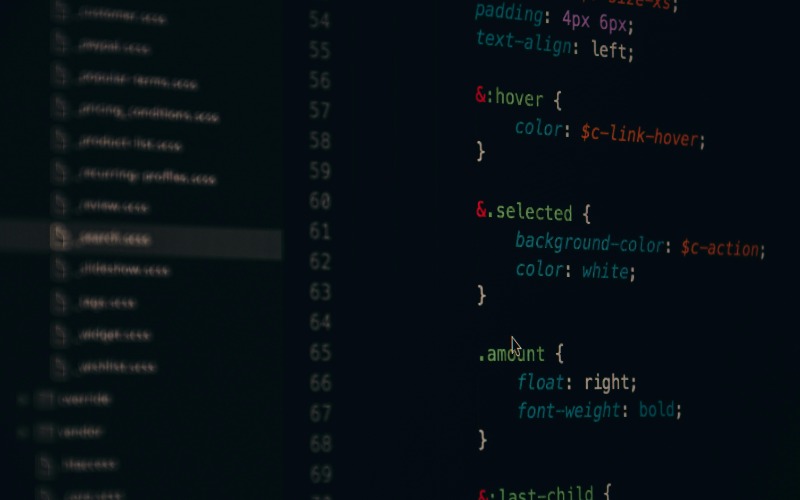The rapid expansion of the RegTech market is fueled by the integration of advanced technologies like Generative AI (GenAI). As regulatory environments become more complex globally, financial institutions and other sectors seek innovative solutions to enhance compliance efficiency and accuracy. The RegTech market, valued at $12.82 billion in 2023, is projected to grow to $85.92 billion by 2032, demonstrating a significant compound annual growth rate (CAGR) of 23.6%.
GenAI is poised to revolutionize RegTech by automating complex compliance processes, improving predictive analytics for risk management, and enhancing data integrity. This integration offers the potential for real-time compliance adjustments and proactive regulatory adherence, crucial for industries like banking and healthcare that face stringent regulatory scrutiny. Additionally, the increasing reliance on digital platforms heightens the need for robust cybersecurity measures, which GenAI can significantly reinforce.
As we look to the future, the role of GenAI in RegTech appears transformative and essential for keeping pace with the evolving regulatory demands and the exponential growth of digital data. The integration of these technologies will likely continue to drive innovation, reduce compliance costs, and enhance the reliability of regulatory processes.
1. The Evolution of RegTech
RegTech, or Regulatory Technology, emerged prominently in response to the increasing complexity of financial regulations, particularly after the 2008 financial crisis. This sector has developed to assist financial institutions in coping with the growing demands of regulatory compliance and reporting. RegTech applies cutting-edge technologies such as AI and machine learning to streamline and enhance the accuracy of compliance processes, helping institutions navigate the regulatory maze more efficiently. This technological advancement has been crucial in managing the sheer volume and variety of data that financial regulations require institutions to handle.
The application of RegTech has faced several challenges, including the need to manage and analyze vast amounts of data and ensure compliance with a continually evolving regulatory landscape. However, technology has played a pivotal role in addressing these challenges by automating complex compliance tasks and providing real-time monitoring and reporting capabilities. This not only reduces the risk of non-compliance and associated penalties but also significantly decreases the operational costs related to regulatory processes. The continuous innovation within RegTech is driven by the need to adapt to new regulatory requirements and technological advancements, ensuring that financial institutions can keep pace with both regulatory demands and market competition.
2. Generative AI in Finance: Opportunities and Capabilities
Generative AI (GenAI) represents a significant evolution from traditional AI models. Unlike traditional AI, which primarily analyzes data and provides insights based on existing patterns, GenAI can generate new data and insights that mimic real-world data but do not directly replicate it. This capability is particularly advantageous in the financial sector, where predictive modeling and scenario simulation are critical. GenAI can create extensive datasets without compromising individual privacy, making it ideal for training models where data may be sensitive or limited.
In the realm of Regulatory Technology (RegTech), GenAI has the potential to transform how financial institutions manage compliance. One of its most promising applications is in automating document analysis. GenAI can review thousands of pages of regulatory documents to identify relevant changes and requirements, significantly reducing the manual effort involved. Furthermore, it can generate compliance reports by understanding and integrating various data points, ensuring that financial institutions remain compliant with existing and new regulations. Another innovative application is in simulating regulatory scenarios, where GenAI can predict the outcomes of different compliance strategies, aiding decision-makers in choosing the most effective approach.
To illustrate the potential of GenAI in RegTech further, consider a financial institution that uses GenAI to automate the tracking and reporting of anti-money laundering (AML) activities. By generating simulated transactions that mirror potential money laundering patterns, GenAI can help in training detection systems to identify and flag suspicious activities more efficiently. Another example could be using GenAI to create diverse financial scenarios to test the resilience of financial systems against market crashes or unexpected financial crises, helping institutions prepare and respond more effectively to real-world events.
3. Integration Strategies for GenAI in RegTech
Integrating Generative AI (GenAI) into existing Regulatory Technology (RegTech) systems requires strategic planning and careful consideration of the technology’s capabilities and limitations. A strategic approach involves assessing the current technological infrastructure and determining where GenAI can add the most value. For example, financial institutions might start by implementing GenAI in areas with high volumes of repetitive data tasks, such as compliance reporting or risk assessment modeling. The integration process often includes setting up pilot projects to test the effectiveness of GenAI tools in real-world regulatory tasks, allowing for adjustments before full-scale deployment.
However, the integration of GenAI with regulatory systems presents several challenges. Data privacy is a paramount concern, as GenAI models often require access to vast amounts of sensitive information to train effectively. Ensuring that these models comply with data protection regulations like GDPR is crucial. Accuracy is another critical challenge, as the outputs of GenAI models must be reliable and accurate to avoid costly errors in compliance reports or risk assessments. Financial institutions must also consider the transparency of GenAI processes, as regulators may require clear explanations of how AI models arrive at their conclusions.
Best practices for implementing GenAI in compliance frameworks include adopting a phased integration approach, starting with less critical functions to manage risks effectively. It is also essential to maintain a strong collaboration between regulatory experts and AI specialists to ensure that the GenAI solutions are both technically sound and compliant with all regulatory requirements. Regular audits and updates of the AI models should be conducted to adapt to new regulations and changes in the financial landscape. Training sessions for compliance officers and other stakeholders can help them understand and trust the AI-driven processes, fostering a smoother integration and more effective utilization of GenAI technologies in RegTech.
4. Impact of GenAI on Regulatory Processes
Generative AI (GenAI) is poised to significantly enhance the accuracy, speed, and efficiency of compliance reporting within the financial sector. By automating data collection and report generation, GenAI reduces the likelihood of human error and accelerates the preparation of compliance documents. This technology’s ability to analyze and synthesize vast amounts of data quickly means that financial institutions can respond more swiftly to regulatory requests and maintain compliance more consistently. Moreover, GenAI can proactively identify compliance risks by analyzing patterns and trends, thus allowing institutions to address potential issues before they escalate.
Looking ahead, the potential for GenAI to transform data management and interpretation in regulatory processes is substantial. GenAI technologies can sift through complex datasets to extract meaningful insights, enhancing decision-making and strategic planning. This capability will allow regulatory bodies and financial institutions to understand and interpret large volumes of regulatory information with unprecedented precision. As adoption spreads, we can expect GenAI to fundamentally reshape regulatory workflows, making them more data-driven and less labor-intensive. The future of regulatory processes with GenAI is likely to be more adaptive, predictive, and integrated, potentially leading to a more stable and transparent financial system.
Conclusion: Embracing the Future of RegTech with Generative AI
As the financial sector continues to navigate the complexities of modern regulatory environments, the role of Generative AI in RegTech is becoming increasingly vital. The technology’s ability to enhance operational efficiencies and ensure compliance through advanced data processing and automation sets the stage for a transformative era in financial regulation. By integrating GenAI, financial institutions are not only preparing to meet today’s regulatory challenges but are also positioning themselves to adapt to future changes more dynamically.
The adoption of GenAI in RegTech represents a significant shift towards more intelligent, efficient, and proactive regulatory processes. As this technology continues to evolve, it promises to unlock new possibilities in regulatory compliance, making it a critical tool for financial institutions aiming to stay ahead in a rapidly changing world. The proactive embrace of GenAI will likely be a key differentiator for industry leaders shortly, heralding a new standard in compliance and data management.











